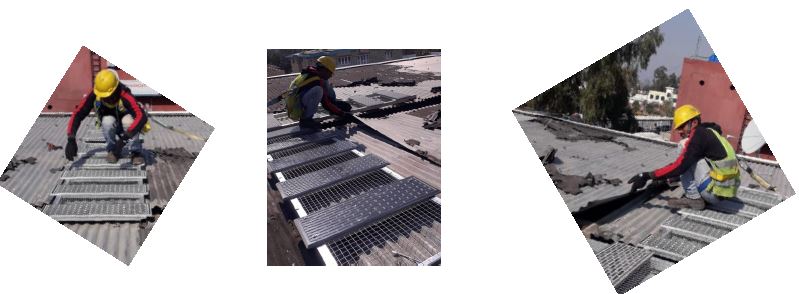According to OSHA (Occupational Safety and Health Administration), construction sites are considered as one of the most dangerous workplace environments. As per 2018 statistics, 21% of worker fatalities occurred in construction, with fall accidents as the most common cause of deaths.
Out of 1,008 total deaths, 338 are fall-related accidents, which is not surprising. According to OSHA’s preliminary release of most violated regulation, lack of fall protection is still ranked first for five consecutive years (2014-2019).
This is the primary reason why there is a stringent implementation of adding a fall protection system in a construction site. But what does it mean to have a quality fall protection system? Does the system assure workers and employers that no accident will take place in the workplace?
The Role of Fall Protection System in a Workplace
Risk of danger and accidents are exceptionally high in a workplace like a construction site. Workers are always at the risk of danger every day, and many associated deaths are caused by the lack of a fall protection system. But what is a fall protection system?
A fall protection system is referred to as a system that is put in place on a working site to mitigate or limit the accidents related to falling. It is a way to prevent and protect all workers from the dangers of falling, including necessary actions to stop a worker’s fall without causing severe injury.
The primary role of a fall protection system is to provide a layer of safety in the workplace. This comes in many forms and methods, and to fully understand its role, it is categorized into four categories.
These are the following:
Fall Elimination
Fall elimination is the most preferred way of fall protection. It generally means avoiding any tasks needed to be done at a height.
Fall Prevention
Since some construction projects require workers to be working at heights, fall prevention equipment, such as safety harnesses, safety lanyards, and self-retracting lines (SRL), are being used.
These are very common types of fall prevention measures that should be observed in any construction site. Moreover, guardrails and other types of barricades are built in place to prevent the possibility of falling accidents in a steep area.
Fall Arrest
Fall arrest is considered the last line of defense for all workers completing a task at heights. It is a method that stops a person from continuously falling, which is why the fall arrest system should be installed every time there’s work to be done at a height.
In the event of the accident, workers will be suspended from falling, hindering the possibility of taking further injuries. Safety nets, dead anchor weights, and rope lifelines are equipment used in a fall arrest system.
Administrative Controls
Administrative controls do not engage in the physical aspect but revolve more on administrative measures to inform workers about avoiding hazard areas. Installation of warning lines, conduction of training, written safety, precautionary warnings, and putting in place security policies are few examples of administrative controls.
Involvement of OSHA (Occupational Safety and Health Administration)
The involvement of OSHA and its standardized fall protection guidelines is to ensure that all employers will follow the implementation of a fall protection system in the worksite. Their existence also represents that the administration is working towards ensuring the safety of all workers.
OSHA highly recognizes that accidents are inevitable in a dangerous place, especially in places like construction sites. However, they are also persistent in looking for ways to mitigate such accidents from happening. Hence, they made fall protection standards all employers should follow.
Employers Responsibilities Conducted by OSHA
Since employers are highly accountable for each of their workers, OSHA made up a regulation that will enforce and obligate all employers to follow. These responsibilities mainly focus on providing a safe working environment for all workers. These includes:
- Guard rails and toe-boards should be installed in high, open, and steep places.
- Ground or floor holes should be covered to avoid accidental slips.
- The rule of 6 feet should be observed at all times. However, if the working height is less than 6 feet, yet the working condition puts any worker to fall in a vat of acid, conveyor belts, pulleys, and gears, the fall protection system should be in place.
- Ensure that other forms of the fall protection system are in place in the construction site, such as placing warning signs in hazard areas.
Furthermore, OSHA requires all employers to always keep and maintain the workplace safe from all known dangers. Also, employers must provide free use of any protective equipment for all its workers. More importantly, they must conduct hazard training for all workers to ensure that they are knowledgeable and informed of all the safety policies.
What is the assurance of having a fall protection system in a construction site?
Accidents are indeed inevitable even with the thorough implementation of safety and precautionary methods. Workers are still vulnerable to the dangers of an accident. But it is best to explain that a fall protection system does not guarantee any accident to happen. It is in place to add a layer of safety and security in the workplace.
Furthermore, it benefits both the employers and the workers at the same time. For the employer’s side, following and exceeding the OSHA guidelines can bring success to the business.
No adverse and negative accident litigation claims, faster project completion, and staying within the budget will give a business a good reputation. And the most important of all, it gives any business owner a peace of mind when it comes to the legalities.
From the worker’s perspective, they are sure that the work environment they are working in is looking out for their safety. Thus, it will result in a more productive set of workers, which translates to faster production and quicker completion.
Takeaway
The implication of fall protection systems in a construction site is to provide a safe and secure working environment. Hence, it is essential to help mitigate and limit the odds of experiencing such awful situations. Proper implementation of a fall protection system that follows OSHA standards and guidelines is beneficial not only for the workers but also to the employers.


